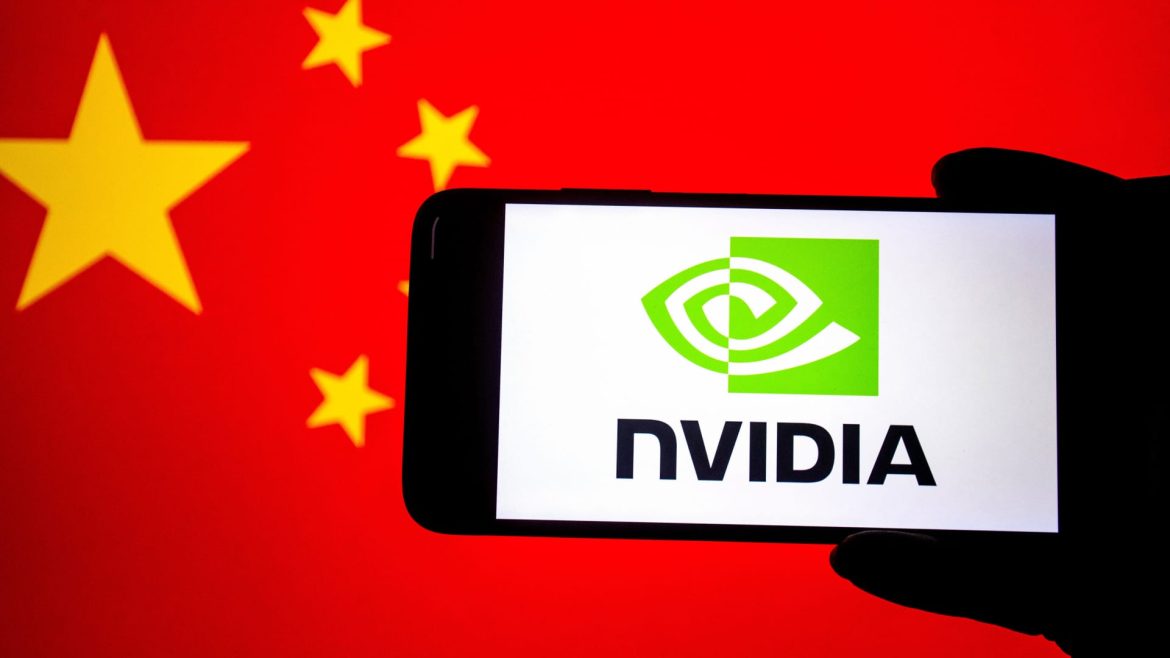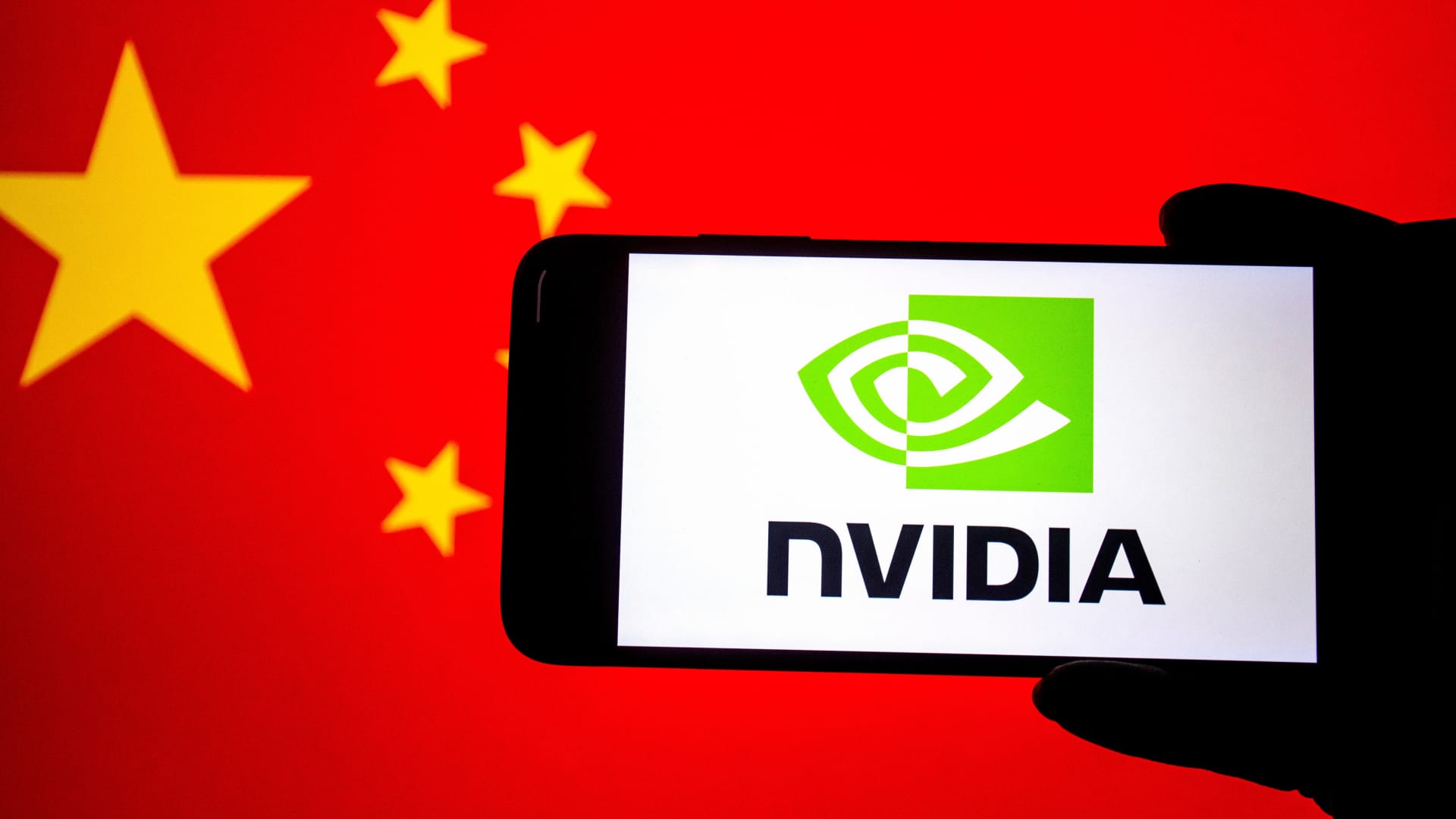Navigating the Geopolitical Tightrope: Nvidia’s H20 Chip in the US-China Tech Standoff
Introduction: The Intersection of Technology and Geopolitics
In the rapidly evolving landscape of global technology, few companies find themselves at the epicenter of geopolitical tensions as prominently as Nvidia. The company’s H20 chip, a product born out of necessity and designed to comply with US export restrictions while catering to the Chinese market, has become a focal point in the ongoing tech standoff between the United States and China. This situation is not merely about a single chip; it is a microcosm of the broader struggle for technological dominance, national security concerns, and the complex interplay of economic interests. The H20 chip’s journey illustrates the delicate balancing act that multinational tech companies must perform in an era of escalating tensions between the world’s two largest economies.
The Genesis of the H20 Chip: A Strategic Response to Export Controls
The creation of the H20 chip was a direct response to the US government’s imposition of stringent export controls on advanced AI chips destined for China. These controls, aimed at preventing China from leveraging advanced technology for military applications, posed a significant challenge for Nvidia, which had a substantial presence in the Chinese market. In response, Nvidia engineered the H20 chip to meet the performance thresholds set by the US Department of Commerce while still providing substantial AI processing capabilities. This strategic move was designed to retain a foothold in the lucrative Chinese market without violating US regulations.
The H20 chip’s design reflects Nvidia’s agility and commitment to serving a crucial market while adhering to legal constraints. However, the chip’s very existence underscores the complexities of operating in a geopolitically sensitive environment. The H20 is not just a product; it is a symbol of the broader struggle to balance technological innovation with national security concerns.
Beijing’s Scrutiny: Security Concerns and National Vigilance
Despite being designed to comply with US export controls, the H20 chip has not escaped the scrutiny of Chinese regulators. The Cyberspace Administration of China (CAC) has reportedly requested Nvidia to clarify potential security risks associated with the chip, particularly concerning the possibility of “tracking” capabilities and other vulnerabilities. This request highlights Beijing’s increasing vigilance over technology imports and its determination to safeguard national security.
The Chinese government’s concerns are not unfounded. There are rumors that the Chinese government is worried about potential backdoors or vulnerabilities that could be exploited by external actors, leading to data breaches or surveillance. These concerns reflect a broader trend of increasing scrutiny over foreign technology imports, as China seeks to protect its technological sovereignty and ensure that its critical infrastructure is not vulnerable to external threats.
Washington’s Watchful Eye: Balancing Innovation and Security
While Nvidia aims to satisfy Chinese demand with the H20 chip, it remains under the watchful eye of US lawmakers and regulators. Concerns persist that even a modified chip could inadvertently contribute to China’s military advancements. Nvidia’s stock price recently experienced a notable drop, reflecting investor anxiety surrounding the ongoing investigation and the broader uncertainty of US-China trade relations.
This situation illustrates the inherent challenge of developing technology that can simultaneously meet the demands of competing geopolitical interests. The H20 chip’s journey highlights the delicate balancing act that companies like Nvidia must perform, as they navigate the complex web of regulations and geopolitical pressures.
Morgan Stanley’s Optimistic Outlook: Easing the AI Bottleneck
Despite the regulatory headwinds, some analysts see a silver lining. Morgan Stanley suggests that the resumption of H20 chip exports to China “removes a key near-term headwind” for China’s AI development. The expectation is that China’s major cloud service providers will increase their AI spending, fueled by the availability of the H20. This perspective highlights the critical role of AI chips in driving technological progress and the potential economic benefits of Nvidia’s continued presence in the Chinese market.
The H20 chip’s potential to ease the AI bottleneck in China underscores the importance of technological collaboration and the mutual benefits that can arise from such exchanges. However, this optimism is tempered by the ongoing geopolitical tensions and the uncertainty surrounding the future of US-China tech relations.
The Competitive Landscape: AMD’s Potential Entry
Nvidia is not the only player in this high-stakes game. AMD is also developing AI chips tailored for the Chinese market, signaling a broader trend of US companies adapting their technology to navigate export restrictions. Competition between Nvidia and AMD in the Chinese market could intensify, potentially leading to further innovation and price adjustments.
It remains to be seen how the Chinese government will regulate this competition and whether it will favor domestic chip manufacturers over foreign suppliers. The evolving competitive landscape highlights the dynamic nature of the global tech industry and the need for companies to remain agile and adaptable in the face of changing market conditions.
The Repair Market Paradox: A Thriving Ecosystem for Banned Chips
Interestingly, a parallel market for the repair and resale of previously banned Nvidia GPUs has emerged in China. While the legality of this market remains somewhat ambiguous, it underscores the insatiable demand for AI chips in the country and the resourcefulness of Chinese businesses in circumventing export controls.
This “grey market” highlights the limitations of export restrictions and the challenges of completely preventing access to advanced technology. The thriving ecosystem for banned chips reflects the resilience and adaptability of the Chinese tech industry, as well as the determination of businesses to find solutions to meet their technological needs.
Jensen Huang’s Perspective: Pragmatism and Optimism
Nvidia’s CEO, Jensen Huang, has adopted a pragmatic approach, downplaying his role in securing the H20 chip’s approval for export to China. He remains optimistic about the chip’s prospects, emphasizing that it will take time to ramp up production once orders begin to flow in. Huang’s measured optimism reflects a calculated strategy of navigating complex political dynamics while positioning Nvidia for long-term success in the Chinese market.
Huang’s perspective underscores the importance of leadership in guiding companies through challenging times. His ability to balance pragmatism with optimism is a testament to his strategic vision and his commitment to Nvidia’s long-term success.
A 2024 Delay: Production Pushback
Originally slated for release in late 2023, reports indicate a delay in the H20 chip’s rollout until 2024. This delay could be attributed to various factors, including ongoing regulatory reviews, production challenges, or strategic considerations related to market timing. The delay underscores the complexity of bringing a product to market in a highly regulated and geopolitically sensitive environment.
The H20 chip’s delayed release highlights the challenges of operating in a rapidly evolving technological and geopolitical landscape. Companies must be prepared to adapt their strategies and timelines in response to changing market conditions and regulatory environments.
White House Input: A Complex Web of Motivations
Adding another layer of intrigue, a White House advisor has claimed that the Trump administration approved Nvidia’s H20 chip exports to China to prevent Beijing from gaining an even greater technological advantage. This assertion suggests that export controls are not solely about restricting China’s access to technology but also about shaping the competitive landscape and influencing the direction of technological development.
The White House advisor’s input highlights the complex motivations behind US export controls and the broader strategic considerations that shape US-China tech relations. The assertion underscores the need for a nuanced understanding of the geopolitical dynamics at play and the importance of considering the broader implications of technological exchanges.
The Evolving US-China Tech War: A Constant State of Flux
The saga of the H20 chip exemplifies the ongoing tech war between the US and China. This conflict is characterized by shifting regulations, strategic maneuvering, and a constant struggle for technological supremacy. The H20’s journey highlights the need for companies to be agile, adaptable, and deeply knowledgeable about the evolving geopolitical landscape.
The evolving US-China tech war underscores the importance of technological innovation and the critical role that companies like Nvidia play in shaping the future of the global tech industry. The conflict highlights the need for a balanced approach that considers both the economic and national security implications of technological exchanges.
Conclusion: A Future Fraught with Uncertainty
The H20 chip’s story is far from over. It remains to be seen how Chinese regulators will ultimately assess its security risks, how US lawmakers will respond to its continued presence in the Chinese market, and how Nvidia will continue to navigate the complex web of regulations and geopolitical pressures. One thing is certain: the H20 chip has become a symbol of the broader struggle for technological dominance and the delicate balancing act that companies like Nvidia must perform in an era of escalating geopolitical tensions.
The fate of the H20 chip will likely serve as a bellwether for the future of US-China tech relations and the global AI landscape. The chip on Nvidia’s shoulder is heavy, but the company’s response will define its future. As the world watches, the H20 chip’s journey serves as a reminder of the complex interplay between technology, geopolitics, and the global economy. The future of the H20 chip is uncertain, but its impact on the tech industry and US-China relations is undeniable.





